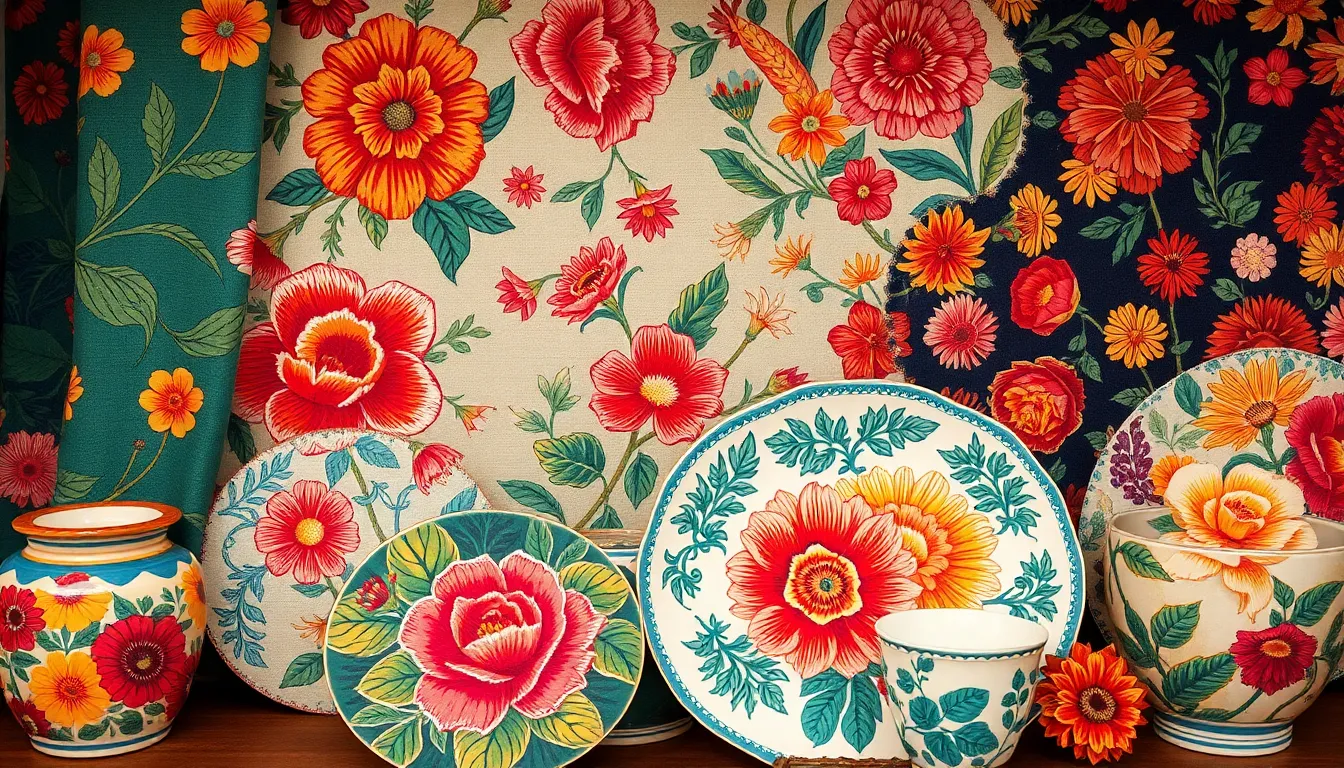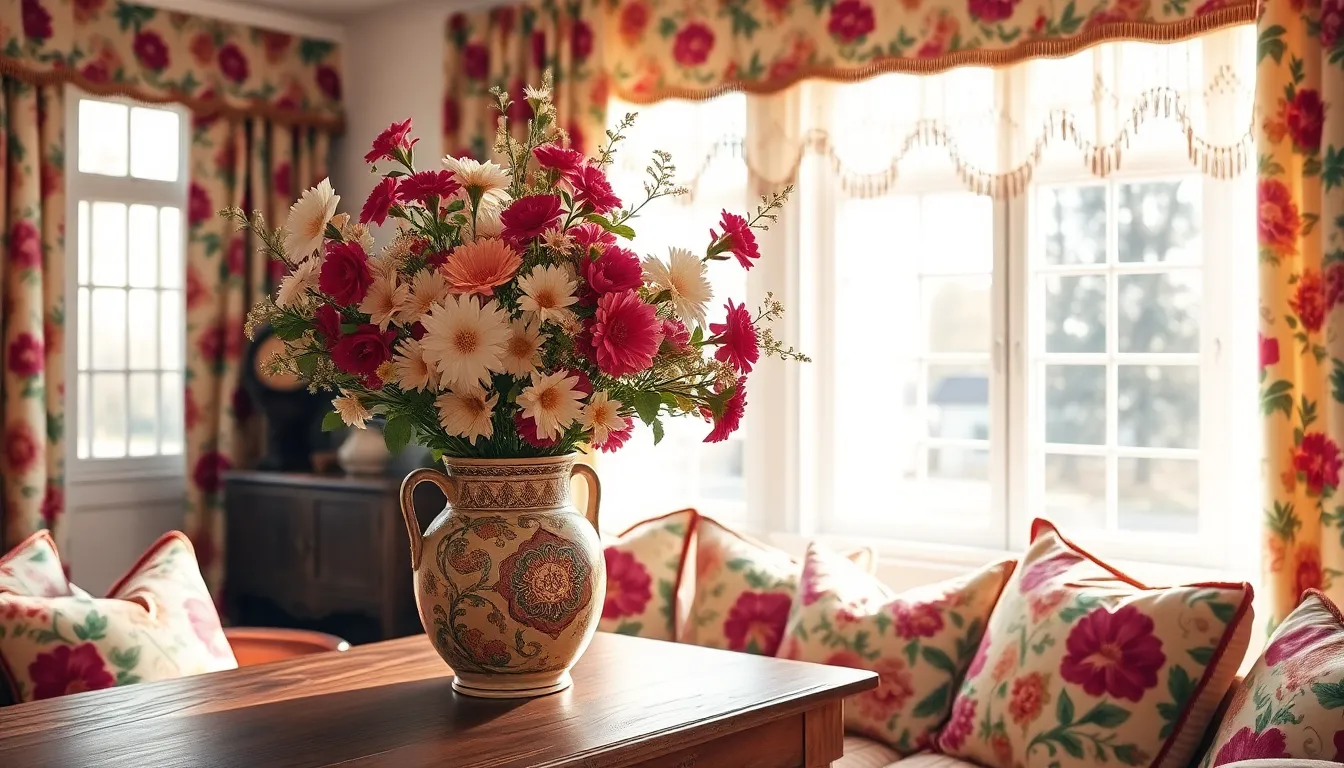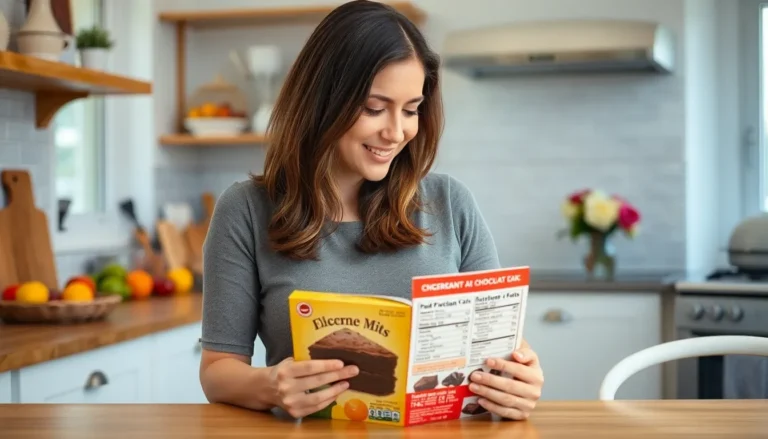Table of Contents
ToggleFloral patterns have a way of bringing a burst of life to any space, outfit, or occasion. Imagine walking into a room adorned with vibrant blooms or slipping into a dress that makes you feel like a walking garden. It’s not just about aesthetics; floral designs evoke feelings of joy and freshness, making them a timeless choice in fashion and decor.
Overview of Floral Patterns
Floral patterns hold a significant place in design and art. They widely range from intricate motifs to simple styles, creating a versatile appeal. These designs often showcase flowers in various forms, colors, and arrangements. Many cultures incorporate floral patterns into their textiles, wallpapers, and ceramics, demonstrating their enduring popularity.
Traditionally, floral patterns evoke feelings of nature and tranquility. They trigger positive emotions and can transform environments, adding a sense of warmth. In fashion, clothing adorned with floral designs can convey boldness or subtlety, depending on the style and color palette. Designers often utilize these patterns to create eye-catching outfits.
Floral motifs also play an integral role in home decor. Including these patterns in items like cushions, curtains, and bedding enhances a room’s aesthetics. They bring an organic element into living spaces, contributing to a fresh ambiance. Many homeowners choose floral wallpaper to create focal points, further illustrating their versatility.
Combining floral patterns with other design elements yields unique results. Pairing them with geometric shapes or solid colors creates contrasts that enhance visual appeal. Such combinations allow for creative expression, whether in fashion or decor. The adaptability of floral patterns makes them suitable for both casual and formal settings.
Recognizing their deep-rooted connections to culture, floral patterns persist in modern design trends. Fashion shows frequently revive classic floral styles, proving their timelessness. On the home front, trends shift towards sustainable materials featuring floral prints, reflecting a growing awareness of environmental impact.
Floral patterns serve as both aesthetic enhancements and emotional evokers, maintaining their place in contemporary design across various domains.
History of Floral Patterns

Floral patterns have a rich history, deeply intertwined with human creativity and culture. These designs reflect humanity’s appreciation for nature across various eras.
Ancient Civilizations
Ancient civilizations often featured floral motifs in their artwork. Egyptians incorporated flowers like lotus and papyrus in their textiles and pottery. Similarly, the Greeks celebrated floral patterns in pottery and architecture, symbolizing beauty and abundance. The Romans utilized intricate floral designs in mosaics and murals, showcasing their opulence. Furthermore, in Asia, especially in China and Japan, floral patterns emerged in textiles and ceramics, representing spirituality and harmony with nature.
Modern Developments
Modern developments in floral patterns showcase a fusion of tradition and innovation. The Arts and Crafts movement in the 19th century revitalized interest in botanical designs, emphasizing craftsmanship and quality. Designers now blend traditional floral motifs with contemporary styles, creating bold, vibrant textiles for fashion and decor. Sustainability also plays a vital role in modern floral patterns, with designers increasingly using eco-friendly materials. In addition, digital printing technology has expanded design possibilities, allowing for intricate details and vibrant colors in modern applications.
Types of Floral Patterns
Floral patterns come in numerous styles that cater to various aesthetic preferences and contexts. These styles range from abstract interpretations to realistic representations, each serving unique design purposes.
Abstract Floral Designs
Abstract floral designs favor shapes and colors over accurate representations of flowers. These designs often use bold lines and vibrant hues, creating an artistic interpretation that evokes floral imagery. Designers create striking patterns by breaking down botanical elements into geometric forms and fluid designs. Such patterns thrive in modern textiles and wallpapers, appealing to those who appreciate contemporary art. Many contemporary artists incorporate abstract floral motifs into their works, infusing spaces with creativity and personality.
Realistic Floral Illustrations
Realistic floral illustrations aim for accuracy, capturing the intricate details of flowers and foliage. Artists often highlight the natural beauty of blooms, providing lifelike representations that evoke emotion. Common uses include wallpaper, fabric prints, and fine art pieces, showcasing each petal’s textures and colors. These designs convey a sense of elegance and sophistication in both fashion and home decor. The meticulous attention to detail enhances their appeal, allowing designers to bring the beauty of nature indoors effectively.
Floral Patterns in Fashion
Floral patterns frequently influence fashion trends, adapting to seasonal changes and designer innovations. They express individuality while reflecting the vibrant energy of nature.
Seasonal Trends
Spring and summer often showcase bright floral prints, embodying freshness and warmth. Designers typically integrate these designs into dresses, blouses, and accessories to enhance seasonal wardrobes. During fall, deeper colors and muted florals emerge, creating a more sophisticated aesthetic. Winter brings understated floral motifs, often through layering in coats or scarves. Each season highlights distinct floral characteristics, allowing wearers to embrace patterns throughout the year.
Iconic Fashion Designers
Many iconic fashion designers have made floral patterns integral to their work. Dolce & Gabbana frequently incorporates bold floral designs, celebrating Mediterranean influences. Alexander McQueen is known for dramatic floral motifs that challenge traditional aesthetics. Oscar de la Renta has embraced florals in elegant evening wear, symbolizing romance and femininity. These designers demonstrate how florals can transcend simple decoration, becoming statements of identity and creativity in the fashion realm.
Floral Patterns in Home Decor
Floral patterns play a significant role in home decor, enhancing the beauty of various spaces and creating inviting atmospheres.
Textiles and Upholstery
Textiles featuring floral patterns add character to living spaces. Fabrics such as curtains, cushions, and throws often display vibrant floral designs. These elements can transform a room’s mood, providing warmth and a welcoming feel. Designers frequently choose bold prints for statement pieces or subtle motifs for understated elegance. Floral textiles work well in different design styles, from traditional to modern. They serve as a powerful tool in layering textures and colors, enriching the overall aesthetic.
Wallpaper and Paint
Wallpaper adorned with floral patterns can create focal points in rooms. Options range from large-scale murals to delicate prints, allowing for various expressions of style. Applying floral wallpaper on an accent wall can dramatically change a room’s dynamics. Paint featuring floral motifs acts as a versatile choice for those seeking a customized look. Some homeowners opt for stenciled floral designs, integrating unique artistry directly into their decor. These elements highlight nature’s beauty, offering serenity and vibrancy to any environment.
Floral patterns continue to hold a significant place in design and fashion. Their ability to evoke emotions and enhance visual appeal makes them timeless choices for various applications. As trends evolve designers are embracing sustainability and innovation while incorporating these beloved motifs.
Whether through bold abstract designs or delicate realistic illustrations floral patterns adapt seamlessly to changing tastes. They bring life to clothing and home decor alike creating inviting spaces and stylish ensembles. This enduring fascination with floral designs reflects humanity’s deep connection to nature and beauty.








